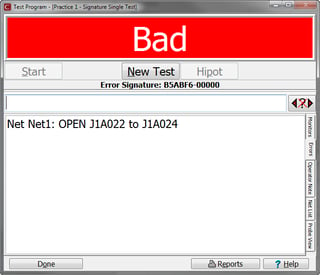You’ve spent time and money building a cable. After testing the cable on your Cirris test system, the results appear on the screen. What do those results mean? Is there an error? Can you fix it, or is your cable useless?
Cirris Low Voltage Testers look for good connections in wires. That means the wire sends a current through the wire starting at one test point and checking that it reaches another test point without any unexpected deviations or interruptions along the way. If the current flows unhindered through the wire and reaches its destination test point, the tester concludes the wire is good. If anything unexpected happens, the tester reports an error and provides details of what is occurring.
Low voltage tests will report one of three errors.
- Open Error: The current did not reach the expected test point.
- Short: The current did not remain isolated in the wire and has somehow reached another outlet.
- Miswire: The current flows from one test point to an incorrect test point.
Depending on the complexity of your wire and the type of test you are performing, there may be other errors described in the test results. These errors will get discussed in future blog articles.
Cirris has created a handy table to help you understand what causes these low voltage errors. You can see it by clicking the link below.

Further Reading:
3 Ways to Set Yourself Up for Wiring Errors
What Do We Mean By “Low Voltage Testing?”